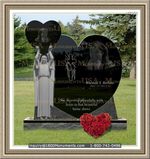|
Tips Of Selecting Funeral Attire
At one time, all mourners were expected to wear formal black dress, complete with hats, ties, veils and gloves. Nowadays the rules have become somewhat more relaxed due to the many cultural, religious and personal influences on burial arrangements. For times when no special requests have been made, there are guidelines for appropriate funeral attire.
The traditional dark suit and tie, or little black dress are still safe bets. The styles are now leaning towards the semi-formal. Though the more casual designs are being accepted, they are still expected to be of darker colors such as dark blue and gray.
For men, a full suit and tie ensemble is traditional, though the more casual slacks, sport coat and collared golf shirt combination is also acceptable. The main thing is to keep it conservative and always wear black dress shoes. Pant, jacket and tie colors should remain dark with patterns being subdued or not at all.
Women should wear conservative office style dresses, skirts or suits in the darker colors. Avoid necklines that are low, hems that are high and patterns and design elements that are flashy as these elements tend to draw attention which is inappropriate for such an occasion. Flat shoes may be substituted for heels, especially for outdoor services.
Children have less strict guidelines to follow. Boys can opt for suits, dress slacks and collared shirts, or even sweater vests while the girls should wear dresses without excessive ruffles or bold, colorful patterns. The youngsters clothing does not have to be black, though it should be of dark or neutral tones with a minimum amount of adornment.
Though the basics of appropriate funeral attire are a safe guideline, there are exceptions to the rules. Some cultures or religions have specific ways that mourners are expected to dress and those should be followed out of respect. Occasionally the deceased will have left behind special requests as to the type of clothing they would like guests to wear and final wishes always take precedence over tradition.
|
|



























